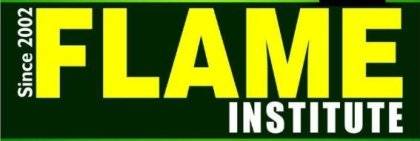a. Sucrose b. Glucose c Aspartame d. Sucralose Ans. d Explanation : Sucrose and glucose are natural sweetening agents while aspartame and sucralose are artificial sweetening agents. (10)
a. Vitamin B b. Vitamin C c. Vitamin D d. Vitamin E Ans. d Explanation : Vitamin E us ab antioxidant present in edible oils. (20)
a. Aspartame b. Alitame c. Saccarine d. Sucralose Ans. a Explanation : Aspartame decomposes at cooking temperature. (8)
Item I Item II A Allosteric effect P Molecule binding to the active site of enzyme B Competitive inhibitor Q Molecule crucial for communication in the body C Receptor R Molecule binding to a site other than the active site …
a. An anti inflammatory compound b. Analgesic c. Hypnotic d. Antiseptic Ans. b (4)
a. Minerals b. Artificial sweeteners c. Aspartame d. Sucralose Ans. b (7)
a. An organic phosphorus compound b. Chlorinated aromatic compound c. Chlorinated aliphatic compoound d. Benzene derivative Ans. a (6)
a. Sodium bisulphate b. Vanomycin c. BHT d. Sodium benzoulphate Ans.c Explanation : Butylated hydroxytoluene (BHT) are phenolic compounds that are often added to food to preserve fat. (7)
a. Salts of sorbic acid b. Sucrolose c. Ascorbic acid d. Citric acid Ans. a Explanation : food preservative are used to prevent the spoilage of food. salts of sorbic acid. propanoic acid table salt sodium benzoate etc act as …
a. Omeprazole b. Chloramphenicol c. Diphenyl hydramine d. Norothindrone Ans. c Explantion : Diphenyl hydramine is employed as antihistamine (10)
a. Tranquilizer b. Antihistamine c. Antifertility drug d.Antibiotic Ans. b Explanation : Terfenadine is commonly used as antihistamine (8)
a. Aspirin b. Chloromycetin c. Chloroquin d. Madribon Ans. c Explanation : Paraldehyde is a hypnotic (4)
a. Metaldehyde b. Acetaldehyde c. Paraldehyde d. None of these Ans. a Explanation : Factual (10)
a. Aluminium Hydroxide b. Cimetidine c. Phenelzine d. Ranitidine Ans. c Explanation : Phenelzine is tranquilzer. It is not an antacid. (9)
a. Prontosil is not converted into sulphanilamide in the body b. Erythromycin is a bbacteriostatic antibiotic c. Vancomycin is a broad spectrum antibiotic d. Ampicillin is not a natural antibiotic Ans. a (10)
a. Disinfectants harm the living tissues b. a 0.2% solution of phenol is an antiseptic while 1% solution acts as a disinfectant c. Chlorine and lodine are used as strong disinfectants d. Dilute solutions of Boirs acid and Hydrogen Peroxide …
a. Syphillis b. Typhoid c. Meningitis d. Dysentery Ans. a (8)
a. Some tranquilizers function by inhibiting the enzymes which catalyses the degradation of nor adrenaline b. Tranquilizers are narcotic drugs c. Tranquilizers are chemical compounds that do not affect the message transfer from nerve to receptor d. Tranquilizers are chemical …
a. Aspirin belongs to narcotic analgesics b. It is effective in relieving pain c. It has antiblood clotting action d. It is a neurologically active drug Ans. a (5)
a. EDTA b. Ethane – 1, 2 Diamine c. Oxalate d. D- penicillamine e. Cupron Ans. d Explanation : D – pencillamine is used in treating Wilson’s disease, a rare genetic disorder of copper metabolism, penicillamine treatment relies on its …
a. Cationic surfactant and antiseptic b. Anionic surfactant and soluble in most of organic solvents c. Cationic surfactant and insoluble in most of organic solvents d. Cationic surfactant and antimalarial Ans. a (7)
a. Some disinfectants can be used antiseptics at low concentration b. Sulphadiazine is a synthetic antibacterial c. Ampicillin is a natural antibiotic d. Aspirin is analgesic and antipyretic both Ans. c Explanation : Ampicillin is a synthetic antibiotic (13)
a. Diazepam b. Procaine c. Mescaline d. None of these Ans. b Explanation : The anesthetics produce temporary insensibility to the vital function of all type of cells, specially of nervous system and are used during surgical operations. These are …
a. Morphine b. N – acetylparaaminophenol c. Diazepam d. Tetra hydrocatenol Ans. b Explanation : N- acetyl p- amino phenol can be used as analgesic without addiction and modification (9)
a. Novalgin b. Penicillin c. Streptomycin d. Chloromycetin Ans. a Explanation : Novalgin used as analgesic (6)
a. Some disinfectants can be used as antiseptics b. Sulphadiazine is a synthetic antibacterial c. Aspirin is analgesic as well as antipyretic d. Diazepam is an antihistamine drug Ans. d Explanation : Diazepam is a tranquillizer and not an antihistamine. …
a. Iproniazid b. Salvarsan c. Terpined d. Chloramphenicol e. Terpineol Ans. c Explanation : Iproniazid → Tranquilizar Salvarsan → Antimicrobial …
(i)Erythromycin (ii) Ofloxacin (iii) Chloramphenicol (iv) Penicillin (v) Tetracycline The pair of bactericidal antibiotics is a. i – ii b. ii- iv c. iii – v d. i- …
a. Mifepristone b. Promethazine c. Valium d. Naproxen Ans. c Explanation : Factual. (9)
a. Antipyretic b. Antiseptic c. Antimalarial d. Analgesic Ans. a Explanation : Factual (6)
a. Luminol b. Tofranil c. Mescaline d. Sulphadiazine Ans. b Explanation : Factual. (7)
a. Analgesics b. Tranquilizers c. Naroctic analgesics d. Antihistamines Ans. b (4)
a. Analgesic and antipyretic b. Antibiotic c. Insecticide d. Herbicide Ans. a (8)
a. Ranitidine b. Iproniazid c. Soda – lime d. Ursodeoxy cholic acid Ans. a Explanation : The drug showing potentail control over hyperacidity in human is Rantidine. (6)
a. Aspirin b. Paracetamol c. Codeine d. Zantac Ans. c Explanation : Factual (9)
a. Analgesic b. Antipyretic c. Antimalarials d. Antibiotic Ans. d Explanation: Penicillin is an antibiotic. It is a narrow spectrum antibiotic. (8)
a. Analgesic b. Antipyretic c. Both a and b d. None of the above Ans. c Explanation : Paracetamol is used as an antipyretic as well as analgesic. (14)
a. Penicillin b. Sulphaguanidine c. chloramphenical d. none of these Ans. b Explantation : Antibics are those drugs, which act against bacterial and vain infection e.g. Chloramphenicol Streptomycin, Penicillin, Tetracyclin etc. Sulphaguanidine is a Sulphadrug. (9)
